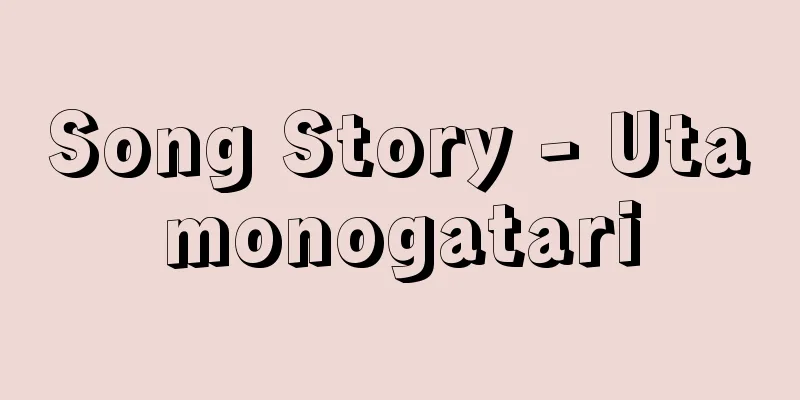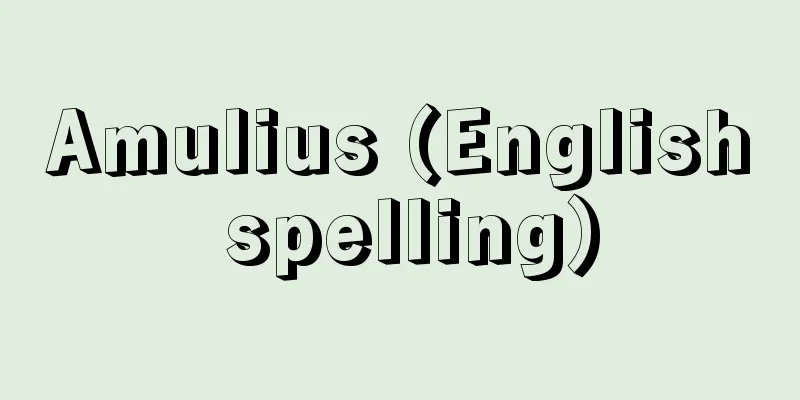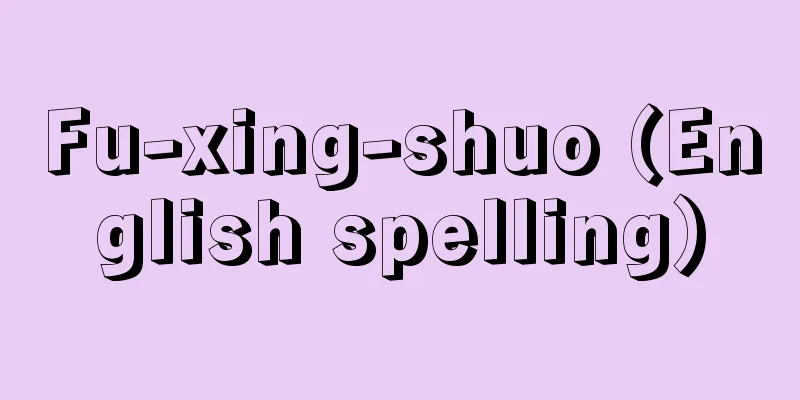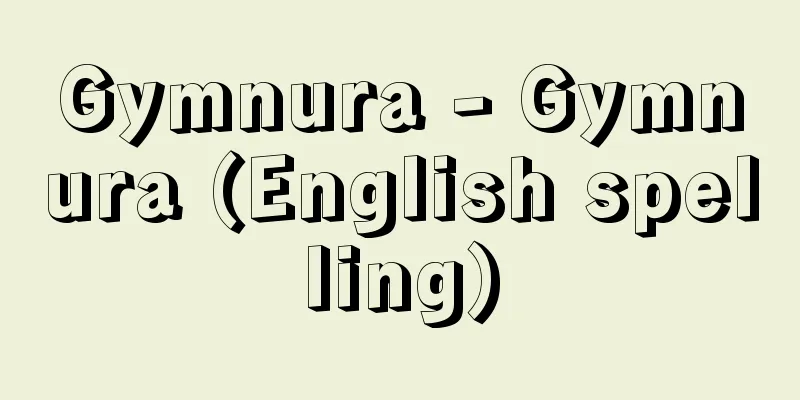State Shinto - Kokkashinto

|
It is a form of Shinto, and is a de facto state religion created as a policy by the modern imperial state. It is a religion centered on rituals, which was created by unifying Shrine Shinto and combining it with Imperial Household Shinto. The new government, which realized the restoration of the monarchy, made Shinto the state religion in 1868 (Meiji 1) by announcing the unity of religion and politics and the revival of the Jingikan (official shrine), and by issuing the Shinbutsu Bunri-rei (law to separate Buddhist and Buddhist traditions), it removed Buddhist elements from shrines and placed all shrines under the direct control of the government. In 1871, the government made all shrines the central religion of the state, established shrine ranks, and established the official status of shrines. Ise Shrine, which enshrines Amaterasu Omikami, the ancestral deity of the imperial family, was designated as the main religion of all shrines. In 1882, rituals and religion were separated, and State Shinto was made a non-religious, supra-religious state ritual. In the mid-Meiji period, the three religions of sect Shinto, Buddhism, and Christianity became de facto officially recognized religions subordinate to State Shinto, and the State Shinto system was established. In 1889, the Constitution of the Empire of Japan was enacted, and its Article 28 stipulated "freedom of religion," but this merely permitted religious activities within the framework of State Shinto. The Emperor was made a sacred and inviolable living god (arahitogami), and as the highest priest of State Shinto, he held supreme religious authority. The Imperial Rescript on Education issued the following year ordered the people to be loyal to the imperial state and emphasized ancestor worship, becoming the de facto scripture of State Shinto. In addition, the "imperial portraits" of the Emperor and Empress were distributed to each school and became objects of worship as de facto holy images of State Shinto. In 1900 (Meiji 33), the Bureau of Shrines was established within the Ministry of Home Affairs, and administration of shrines and administration of religion were separated. In the late Meiji period, shrine ceremonies were established based on the Imperial Family rituals, and Shinto priests were given official status as honorary government officials. The national government and local prefectures, cities, towns, and villages provided donations for the management of shrines. Under State Shinto, shrines such as Yasukuni Shrine, Kashihara Shrine, Meiji Shrine, Chosen Shrine, and Kenkoku Shinbyo were built one after another throughout Japan, as well as in colonies and occupied territories. Citizens were obligated to worship the Emperor and have faith in shrines, and were organized into parishioners of local shrines. In 1940 (Showa 15), marking the 2,600th year of the Japanese Empire, the Shrine Bureau was elevated to the rank of Jingi-in, and as the war intensified, the doctrine of the national polity was promoted. Japan was considered the most divine nation in the world, ruled by an unbroken line of Emperors, and the slogan for the "Holy War" was "Hakko Ichiu," which meant world domination. Immediately after Japan's defeat in December 1945, GHQ (Supreme Commander for the Allied Powers) issued the Shinto Directive, ordering the abolition of State Shinto and the separation of politics and religion. Shrine Shinto lost its official national character and was made to restart as a private religion, and in 1947 the Association of Shinto Shrines was established. [Shigeyoshi Murakami] "State Shinto" by Shigeyoshi Murakami (Iwanami Shinsho) " " The 100-Year History of Shinto at the Meiji Restoration, compiled and published by the Shinto Cultural Association, 5 volumes (1966-68)" "Shinto Faith, the People, and the Emperor System" by Toshio Fujitani (1980, Horitsu Bunkasha) [Reference] |Source: Shogakukan Encyclopedia Nipponica About Encyclopedia Nipponica Information | Legend |
|
神道の一形態で、近代天皇制国家が政策的につくりだした事実上の国家宗教。神社神道を一元的に再編成し、皇室神道と結び付けた祭祀(さいし)中心の宗教である。王政復古を実現した新政府は、1868年(明治1)祭政一致、神祇官(じんぎかん)再興を布告して神道の国教化を進め、神仏判然令で神社から仏教的要素を除去して、全神社を政府の直接の支配下に置いた。71年、政府は全神社を国家の宗祀とし、社格を制定して、神社の公的地位を確立した。皇室の祖先神天照大神(あまてらすおおみかみ)を祀(まつ)る神宮(伊勢(いせ)神宮)は、全神社の本宗(ほんそう)と定められた。82年、祭祀と宗教の分離が行われ、国家神道は、非宗教、超宗教の国家祭祀とされた。 明治中期には、教派神道、仏教、キリスト教の3教が、国家神道に従属する事実上の公認宗教となり、国家神道体制が成立した。1889年大日本帝国憲法が制定され、その第28条は「信教ノ自由」を定めたが、それは、国家神道の枠内での宗教活動の容認にすぎなかった。天皇は神聖不可侵の現人神(あらひとがみ)とされ、国家神道の最高祭司として祭祀大権を保持する存在となった。翌年出された「教育勅語」は、国民に天皇制国家への忠誠を命じるとともに祖先崇拝を強調し、国家神道の事実上の教典となった。また各学校へ配布された天皇・皇后の「御真影(ごしんえい)」は、国家神道の事実上の聖像として礼拝の対象となった。1900年(明治33)内務省に神社局が設置され、神社行政と宗教行政が分離された。 明治後期には、皇室祭祀を基準として神社祭式が定められ、神官神職は待遇官吏として公的身分を与えられた。神社の経営には、国および道府県市町村から供進金が支出された。国家神道のもとで、国内をはじめ植民地、占領地などに靖国(やすくに)神社、橿原(かしはら)神宮、明治神宮、朝鮮神宮、建国神廟(びょう)などの神社が相次いで創建された。国民は天皇崇拝と神社信仰を義務として課せられ地元の神社の氏子に組織された。1940年(昭和15)「紀元二千六百年」を機に神社局は神祇院に昇格し、戦争の激化とともに、国体の教義が鼓吹された。日本は万世一系の天皇が統治する万邦無比の神国とされ、世界征服を意味する八紘一宇(はっこういちう)が「聖戦」のスローガンとなった。 敗戦直後の1945年(昭和20)12月、GHQ(連合国最高司令部)は神道指令を発して、国家神道の廃止と政治と宗教の分離を命じた。神社神道は国家的公的性格を失って、民間の宗教として再出発することとなり、47年神社本庁が設立された。 [村上重良] 『村上重良著『国家神道』(岩波新書)』▽『神道文化会編・刊『明治維新神道百年史』全5巻(1966~68)』▽『藤谷俊雄著『神道信仰と民衆・天皇制』(1980・法律文化社)』 [参照項目] |出典 小学館 日本大百科全書(ニッポニカ)日本大百科全書(ニッポニカ)について 情報 | 凡例 |
<<: National credit - public credit
>>: Nationalism - statism English
Recommend
Trachyte
A volcanic rock belonging to the alkaline rock se...
Pegu Dynasty - Pegu-cho (English spelling)
A Burmese kingdom established by the Mon people fr...
Sholem Aleichem
…the greatest Jewish author in modern Yiddish lit...
Science of art
Among the thoughts on art, there are those that s...
Bode's law
An empirical law that applies to the distance betw...
Domin
〘 noun 〙 The people who live in that land. Native ...
Phanerozoic
...Reign, kingdom, lineage, series, and stage are...
Bee Gees
...The word "discotheque" originally me...
Hysteria Research (English)
This work was published in 1895 as a joint work by...
The Legend of Emon Saburo
…It belongs to the Shingon sect of Buddhism, and ...
portmanteau
…In addition to being used for travel, they are a...
chirognomie
... Famous palmists in modern times include S. D&...
Doctoral Program - Doctoral Program
A degree awarded to those who enter a doctoral co...
Vedic - Vedic
It is the language that constitutes the oldest lay...
specific name
…The classification of living things was establis...









